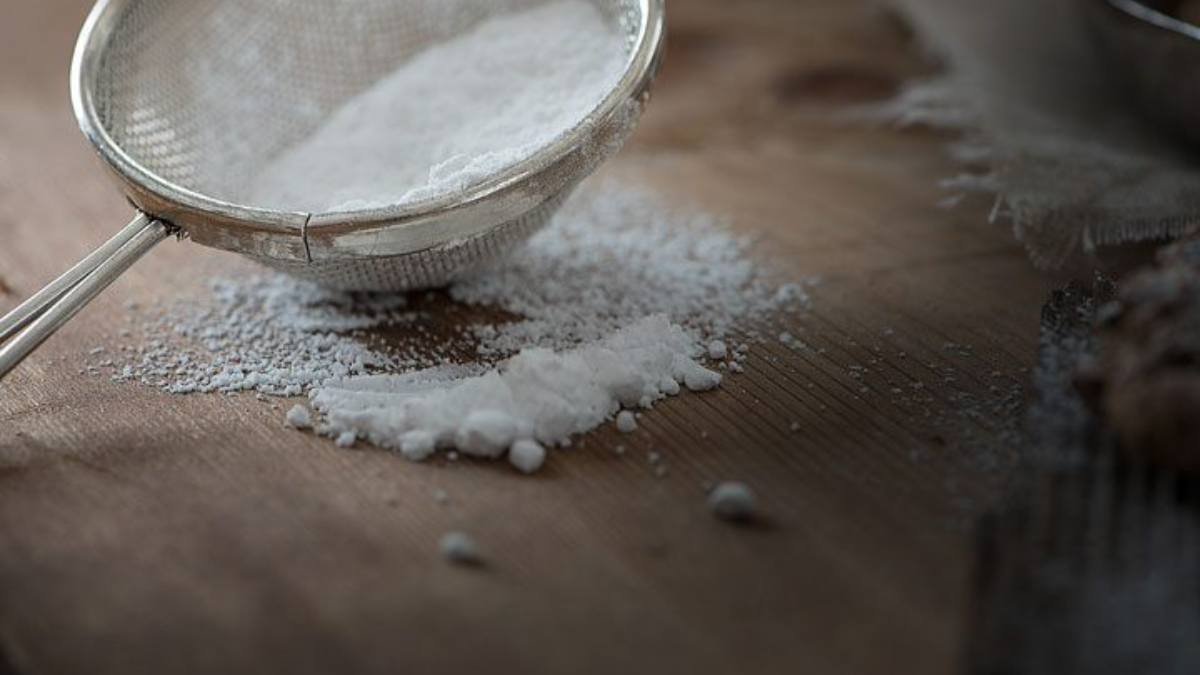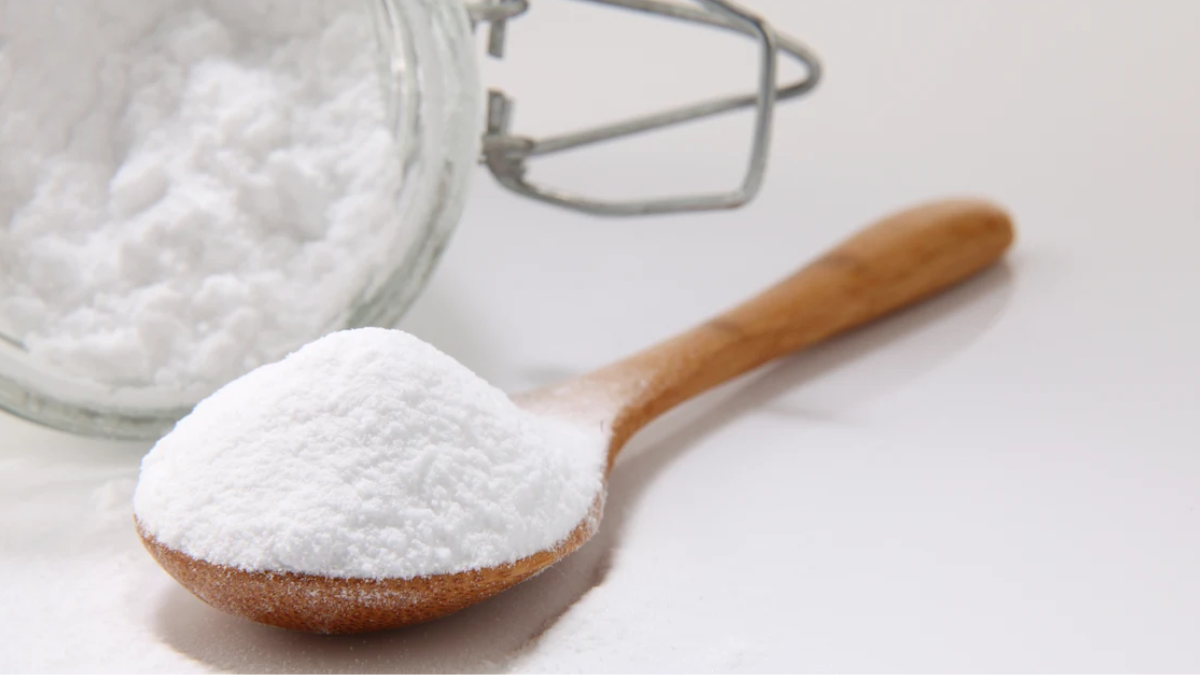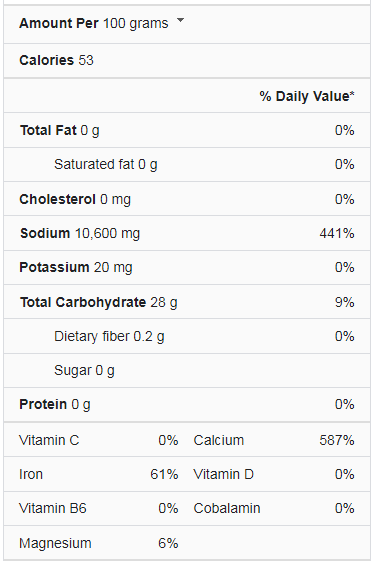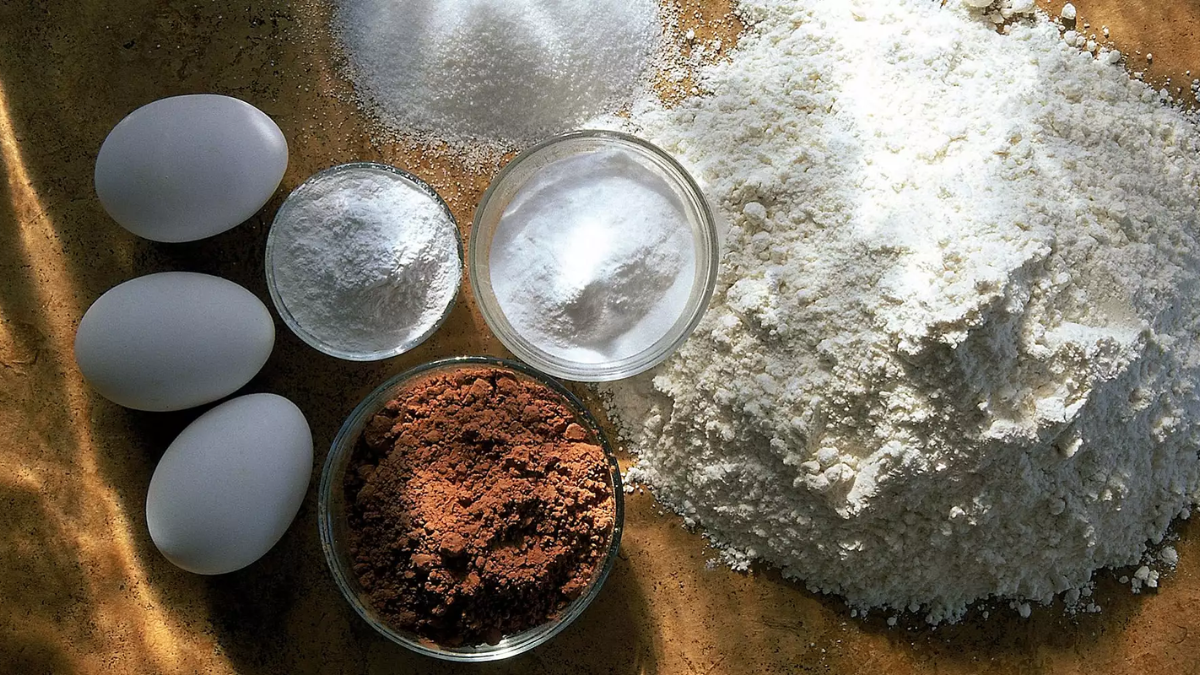One of the most important ingredients a home baker may have is baking powder. One of the most often used leaveners in baked goods is baking soda. This straightforward chemical substance, sodium bicarbonate, is ground to a fine powder from its natural crystalline form when used in food.
It imparts a light, fluffy texture to meals like bread, cakes, muffins, and cookies. That’s because it possesses leavening qualities, which means that when it interacts with an acid like vinegar or lemon juice, it produces carbon dioxide, which helps the dough to rise. Nevertheless, baking soda has many other purposes around the house besides cooking.
Prepare yourself for fluffy, soft-baked delights! Don’t give up if you’re in the mood to bake but find out of baking powder! Fortunately, a variety of additional substances work admirably as replacements.
The even better news is that you probably already have some of these in your kitchen. We’ll walk you through the top substitutes for the magic ingredient baking powder, whether you’ve run out or need to bake for someone with a food allergy.
Baking Powder Nutrition Facts
What is Baking Powder?
The mineral sodium bicarbonate serves as baking powder’s base and active ingredient. However, an acid is used with baking powder. Cream of tartar is frequently used as an acidic substance.
Here is a little science lesson to help you understand how this aids dough and batter are rising. Baking powder reacts with liquids, even as simple as water, to produce carbon dioxide bubbles when it comes into contact.
These bubbles are trapped by heat after the mixture is placed in the oven, creating tiny pockets of air. The dough or batter can swell thanks to these tiny air bubbles. This contributes to the baked good’s high rise and fluffy texture.
Can you Use Baking Soda as a Substitute?
You might be pondering whether baking soda can be used instead of baking powder, given that both products have sodium bicarbonate as their primary component.
Yes, but only when combined with an acid to get the same outcome as baking powder. Discover which acids pair well with baking soda in the following paragraphs and several other fantastic alternatives that will give your baked goods their distinct rise.
Best Substitute for Baking Powder
Baking powder can be replaced in a variety of ways. Some are superior to others, but let’s look at the top 10 below so you can start baking right away:
Vinegar
It’s not a typo, no. Baking powder can be easily replaced with vinegar in baked goods. This releases carbon dioxide gas when combined with baking soda. The baked items rise as a result of this.
You need a one-half teaspoon of vinegar and one-fourth of a baking soda to replace one teaspoon of baking powder. This shouldn’t significantly alter the flavor, which is a plus.
However, if you’re concerned that your pancake will taste and smell like white vinegar, you can adjust the recipe by adding more sugar, which should mask the vinegar flavor.
Buttermilk
You will most likely end up with the commercial variety unless you discover the authentic, vintage buttermilk produced as a by-product of sweet cream churned into butter. A great replacement for baking powder is this fermented dairy product. It tastes something like plain yogurt and is slightly acidic and sour.
A great replacement for baking powder is this fermented dairy product. It tastes something like plain yogurt and is slightly acidic and sour. Bacterial cultures and milk are typically used to create commercial buttermilk. After that, it is allowed to ferment, causing the sugars to turn into acids.
Baking soda can be combined with buttermilk, and this acid provides a leavening action similar to baking powder. Add 12 a cup (122 grams) of buttermilk and 14 baking soda to your ingredients to replace one teaspoon of baking powder.
If you want to preserve a particular consistency and texture, it is advised that you reduce the number of other liquids in your recipe by the same amount of buttermilk used. This will make up for the buttermilk that was added.
Plain Yogurt
Another excellent alternative to baking powder is plain yogurt because it has the proper level of acidity to leaven the baked goods.
Additionally, while you read this, you probably already have this in your refrigerator!
Use 1/4 teaspoon baking soda and 1/2 cup plain yogurt in place of 1 teaspoon baking powder in your recipe.
Once more, you must lessen the liquid in the recipe to make up for the yogurt. Since it has a neutral flavor, this shouldn’t impact the full flavor, but if you want to add more flavors, think about using vanilla or berry yogurt.
Lemon Juice
Recall that amount? Salt plus acid makes fluffy baked pastries. Lemon juice, on the other hand, has a very high citric acid content, making it quite acidic and a good substitute for baking powder.
When baking soda and lemon juice are mixed, the acid in lemon juice can start an acid-base reaction.
Lemon juice’s strong flavor is a drawback. Therefore it’s best utilized in dishes that only need a little baking powder. To replace one baking powder, combine 1/4 teaspoon of baking soda and 1/2 teaspoon of lemon juice.
Molasses
As with buttermilk, the manufacturing of sugar results in the formation of molasses. Both baking powder and refined sugar are frequently substituted with them. When combined with baking soda, molasses is acidic enough to initiate an acid-base reaction.
To replace one teaspoon of baking powder, combine 14 (84 grams) of a cup of molasses with 14 teaspoons of baking soda. Since molasses has a high sugar level, cutting less on the liquid and sweetener in the recipe could be worthwhile.
Club Soda
So far, all of the alternatives have involved baking soda, but what if you don’t have access to either? It’s easy! Just incorporate something carbonated. Baking powder’s primary goal is to produce bubbles.
This frothy fizz is already present in club soda. Because club soda doesn’t have much sodium bicarbonate, it works well in dishes that don’t call for many volumes, like pancakes.
Simply stir in unflavored seltzer or soda to the batter if the flavor goes with what you’re baking. Replace all the liquid in your recipe with soda for the best results. Don’t do this if the original liquid is mostly responsible for the dish’s flavor.
Cream of Tartar
The acidic substitute cream of tartar is also known as potassium hydrogen tartrate. It is a by-product of manufacturing wine and is made up of white powder. In several recipes, cream of tartar is frequently used by chefs to solidify egg whites and creams. It also effectively prevents the formation of any sugar crystals.
This works great as a baking powder substitute and is simple to use and locate. Visit your neighborhood grocery shop, where you should be able to find it in the spice section. Use 1/4 teaspoon of baking soda and 1/2 teaspoon of tartar in place of 1 teaspoon of baking powder. Keep the tartar to baking soda ratio at 2:1 for the best outcomes.
Self Rising Flour
If you have self-rising flour, you may use it instead of conventional flour in many recipes. If you have self-rising flour, you may use it instead of conventional flour in many recipes. This one is pretty much obvious from the name!
Baking powder, salt, and all-purpose flour are the main ingredients used to make self-rising flour. Without baking soda, it contains everything you need to fluff up the pancakes and watch those delicacies rise to new heights.
Sour Milk
Sour milk is typically discarded, but it can be an excellent substitute for baking powder. This is due to the acidification process that spoiled milk underwent, which lowered pH values. Baking soda and sour milk react chemically to produce the same leavening effect as baking powder.
Twelve cups of sour milk and 14 teaspoons of baking soda can be used in place of 1 teaspoon of baking powder. Reduce the number of liquids in the recipe by the same amount of sour milk added as you would with most of the liquid replacements on this list.
Whipped Egg Whites
You should see how crucial egg whites are in many recipes if you thought baking powder was a magical ingredient. Whipped egg whites, not baking powder, are responsible for light and airy textures for many baked items.
Egg whites expand into tiny air bubbles as they are whisked, adding volume and lightness to the baked items. This technique is frequently used to make pancakes, meringues, soufflés, and many more cakes. This is a fantastic substitute if you don’t have baking soda or powder access.
What Happens if you don’t Use Baking Powder?
Many recipes call for baking powder, especially if you’re baking. With that being said, though, you may not always have baking powder available to you. What happens if you don’t use it in light of that?
Baking powder is crucial since it promotes oven rising in your baked goods. When you are baking anything like a cake, this cannot be very pleasant. Baking without baking powder is doable for items like cookies and banana bread, but the dough won’t rise either. But there is a fix for this.
For example, you can substitute self-rising flour for baking powder while creating a cake. You won’t need to use baking powder because it will raise the baked items. Additionally, ingredients like cream of tartar and baker’s yeast can be used.
What is the Difference Between Baking Powder and Baking Soda?
Despite the frequent confusion between the two, there is a difference between the two. Both are employed to make whatever you are baking rise well and tall, but you cannot simply swap one for the other without adjusting the quantity specified in the recipe.
Baking powder is a combination of baking soda and dry acid (and occasionally cornstarch); therefore, unlike baking soda, it doesn’t require the addition of another acidic ingredient to leaven the baked good. Because baking soda is a base, it must combine with an acidic substance, such as milk or lemon juice, to leaven a recipe. It leaves a metallic flavor in baked goods if not combined with an acid, which is not the desired outcome.
Conclusion
A leavening agent, baking powder can soften the texture of whatever you’re creating and assist your baked goods in rising. The dry acid in the baking powder interacts with the base when combined with water, causing carbon dioxide production. Your recipe rises as a result of the bubbles that are produced by the release. Since baking powder has an expiration date like anything else, it could need to be changed.
Once it expires, it loses its effectiveness as a leavening agent, so your baked goods won’t rise as they should. By placing about 1/2 tsp of baking powder into some warm water, you can check to determine if it has expired. The concoction still works even if it fizzles. You should discard the remaining baking powder if it doesn’t.



